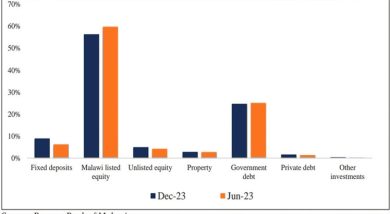Disaster risk reduction vital
Why is disaster risk reduction more important than ever?
Across the world, the events of 2020 and the coronavirus pandemic have shown us first-hand the importance of disaster risk reduction.
The pandemic has exposed the consequences of budget cuts for disaster risk reduction. Sadly, this is all too common since reducing potential future losses often takes second place to other priorities with immediate and easily visible impacts.
We know this situation well in Malawi, where disaster risk reduction does not receive a budget line. Instead what is budgeted is contingency for emergency response measures after a disaster.
But risk reduction is better than response.
Only planning for disaster response is, of course, less than ideal.
Ask any farmer whether they would prefer to lose their harvest to drought and rely on a food parcel of assistance, or receive timely climate information and support for climate-smart agricultural practices that enable them to maintain harvest through dry conditions. As well as unnecessary financial losses, the psychosocial impacts are significant.
Fortunately, disaster risk reduction does not have to be expensive. Many examples of disaster risk reduction are “win-win”, namely that they return a benefit regardless of whether or not a disaster strikes.
Win-win disaster risk reduction will benefit Malawians even if disasters do not occur.
If smallholder farmers in Malawi had better access to weather information for the coming season, they could make better decisions about what varieties to plant and when to plant, thereby increasing the likelihood of a decent harvest.
Improving climate information and early warning can enable behavioural changes that do not require additional capital.
Another “win-win” method of disaster risk reduction is conservation farming, which has proved to be highly effective at reducing risk in dry conditions—as the application of mulch to the soil maintains moisture and reduces reliance on rain.
Investing in disaster risk reduction is cost-effective.
As well as the moral imperative, there is strong economic evidence that money invested in disaster risk reduction is better spent than trying to deal with the consequences.
As well as avoided losses, these disaster risk reduction investments improve livelihood security and encourage further investment—meaning that benefits arise out of the disaster risk reduction even if the disaster does not occur.
This “triple dividend” of resilience then contributes to disaster risk reduction having significant economic benefits. Evidence shows that benefit to cost ratios can give return from 3 to 1 to 50 to 1— essentially meaning that every $1 spent results in benefit of $3 to $50.
A study conducted a decade ago by Tearfund in Mzimba shows that K24 of net benefits were realised from every K1 of investment in climate-smart agriculture interventions.
In addition to the first dividend of overcoming food insecurity, second and third dividends arose from better incomes enabling saving and investment in healthy diets and education; and improvements to soil fertility.
How can Malawi reduce disaster risk?
The arguments for investment in disaster risk reduction are clear.
Malawi’s new government has the opportunity to step up and make this is a political and budgeting priority.
Most fundamentally, it is important to pass the new Disaster Risk Management Bill into law—to create the legal framework for focusing efforts on risk reduction.
Lawmakers must also put aside budget for reducing disaster risk, not just for responding to disasters after they have happened, as this is the best use of public funds.
There is scope to modify existing interventions to ensure they reduce disaster risk.
Using the improved availability of seasonal weather and climate information, the Affordable Inputs Programme could be designed to ensure that inputs are supported that enable risk reduction from drought and floods.
This would take some work to match the diversity of farming conditions with the diversity of weather conditions, but it is one example of how an existing policy could be readily adapted to build effective resilience. n




